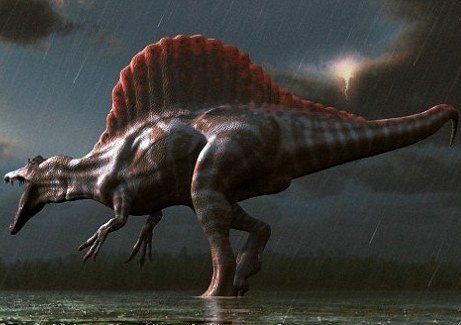Giant Water-living Dinosaur Unveiled, Scientists Calling it Alien-like and Strange


The skeleton of a huge water-living Dinosaur has been unveiled in the deserts of Morocco. This Dinosaur skeleton is of 50-foot length and it belongs to the Spinosaurus Aegyptiacus group and was the biggest carnivorous dinosaur. It existed about 95 million years ago.
These findings were published in the journal Science on September 11, 2014.
The skeleton was brought at the National Geographic Society in Washington, D.C. where scientists studied the creature.
German palaeontologist Ernst Stromer first discovered Spinosaurus fossils in Egypt in 1912. But in 1944, most of the bones were destroyed in the bombing of Munich in World War II where the fossil was kept.
Now it is after 70 years that a new skeleton of Spinosaurus aegyptiacus was found in Morocco and it has been revealed that the Spinosaurus was far more aquatic than originally thought.

These dinosaurs had a long neck, strong clawed forearms, powerful jaws and dense bones of a penguin.. it propelled inside water with its flat feet which were probably webbed. It had a spiny sail on its back which was 7 feet tall.
Study lead author Nizar Ibrahim of the University of Chicago said, “It’s like working on an extraterrestrial or an alien, it’s so different than anything else around.” He described the creature as “so bizarre it’s going to force dinosaur experts to rethink many things they thought they knew about dinosaurs.”
T-Rex vs. Spinosaurus in the movie Jurassic ParkScientists believed that all dinosaurs lived on land and occasionally went inside the water. But this new fossil provides clear evidence of a water-living Dinosaur. Study co-author Paul Sereno of the University of Chicago said, “it could walk and would probably nest on land, but on land it moved more awkwardly than in water. It lumbered on its two hind feet because its powerful forelegs with sharp curved claws were designed for killing than walking.” He called it “an evolutionary experiment going into the water.”






